Which type of bone is humerus? Where is it located?
Humerus is long bone.It is the bone of arm.
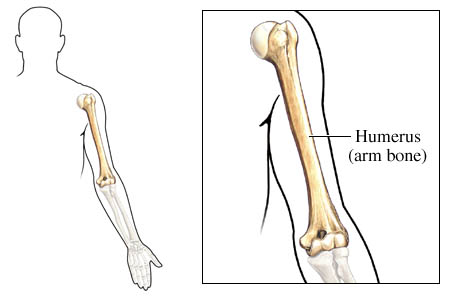
Location of Humerus
What are the parts of humerus?
Humerus has two ends (upper and lower) and an intervening shaft.

Parts of humerus
Describe the upper end of the humerus.
Upper end: consists of head, anatomical neck, greater and lesser tubercles and intertubercular sulcus.
- Head has a rounded convex articular surface ,which articulates with glenoid cavity to form shoulder joint.
- Anatomical neck is present at the junction of head and rest of the upper end.
- Lesser tubercle is present on the anterior aspect of upper end.
- Greater tubercle on its anterolateral aspect.
- Lesser tubercle has one and greater tubercle has three facets on their upper surface for attachment of muscles (musculotendinus cuff/rotator cuff muscles).
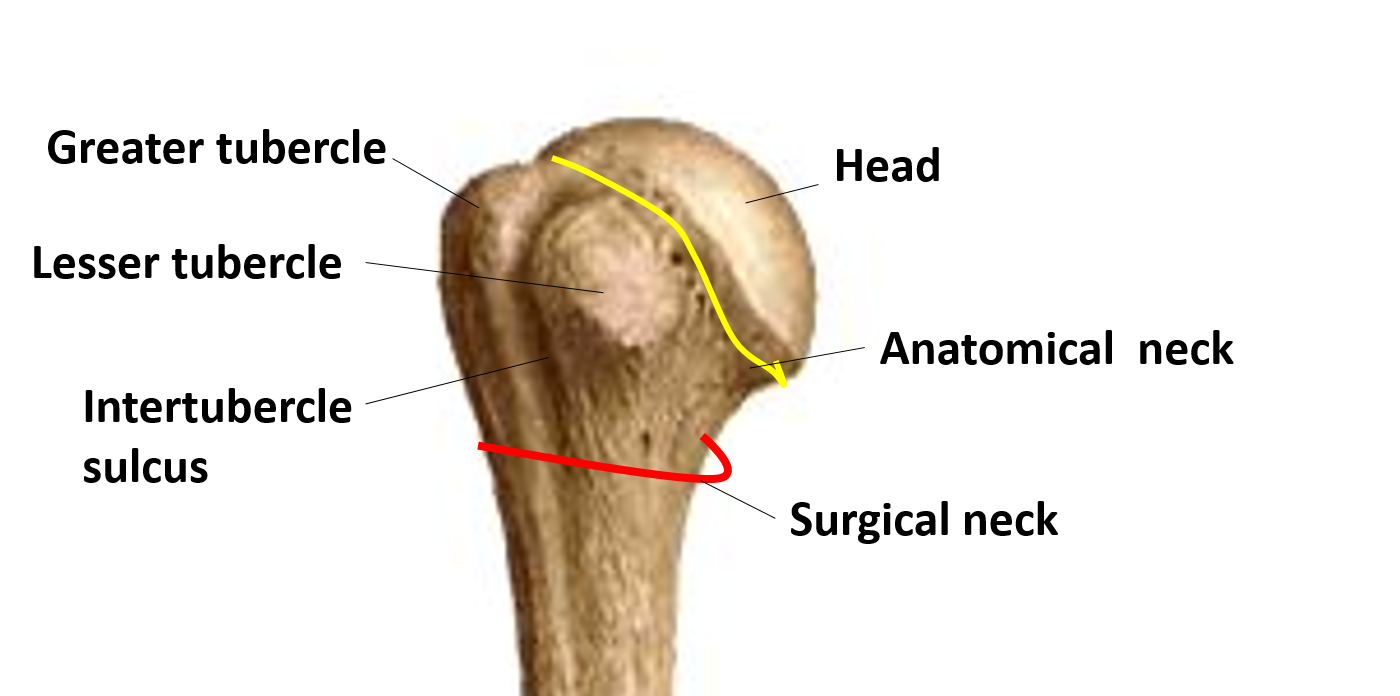
Upper End of Humerus
- Intertubercular sulcus is present between the tubercles.
- The junction of upper end with shaft is called surgical neck of humerus.
Describe the lower end of the humerus.
- Lower end: consists of articular and non -articular parts.
- Articular parts are – rounded capitulum laterally (articulates with head of radius) and pully like trochlea (articulates with ulna).
- Non-articular parts are – medial and lateral epicondyles, radial fossa ( above the capitulum), coronoid fossa ( above the trochlea) and olecronon fossa on the posterior surface.
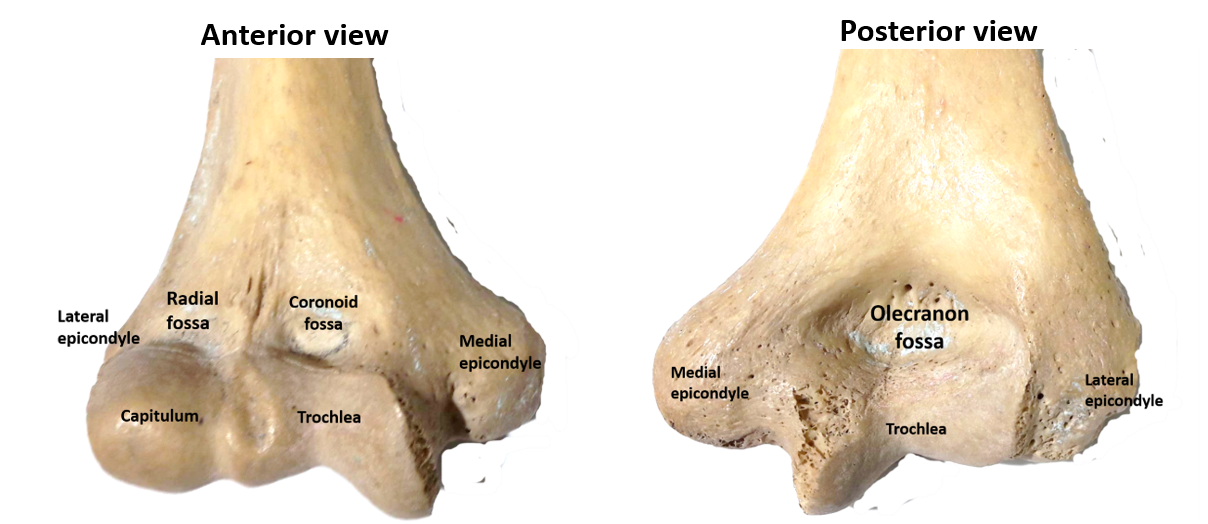
Describe the general features of shaft of humerus.
Shaft of humerus: It is cylindrical in upper half and triangular in lower half. It has three borders and three surfaces.
- Borders
- Anterior border : continuation of lateral lip of bicipital groove.
- Medial border: Medial lip of bicipital groove continues downwards as medial border which then continues as medial supracondylar ridge.
- Lateral border: Is well defined only in lower half, coninues downwards as lateral supracondylar ridge.
- Surfaces
- Anteromedial surface: between anterior and medial border.
- Anterolateral surface: between anterior and lateral border. Just above the middle shows ‘V’ shaped tuberosity called ‘Deltoid tuberosity‘.
- Posterior surface: between medial and lateral border. In its middle 1/3rd has a shallow groove called ‘Radial groove’.
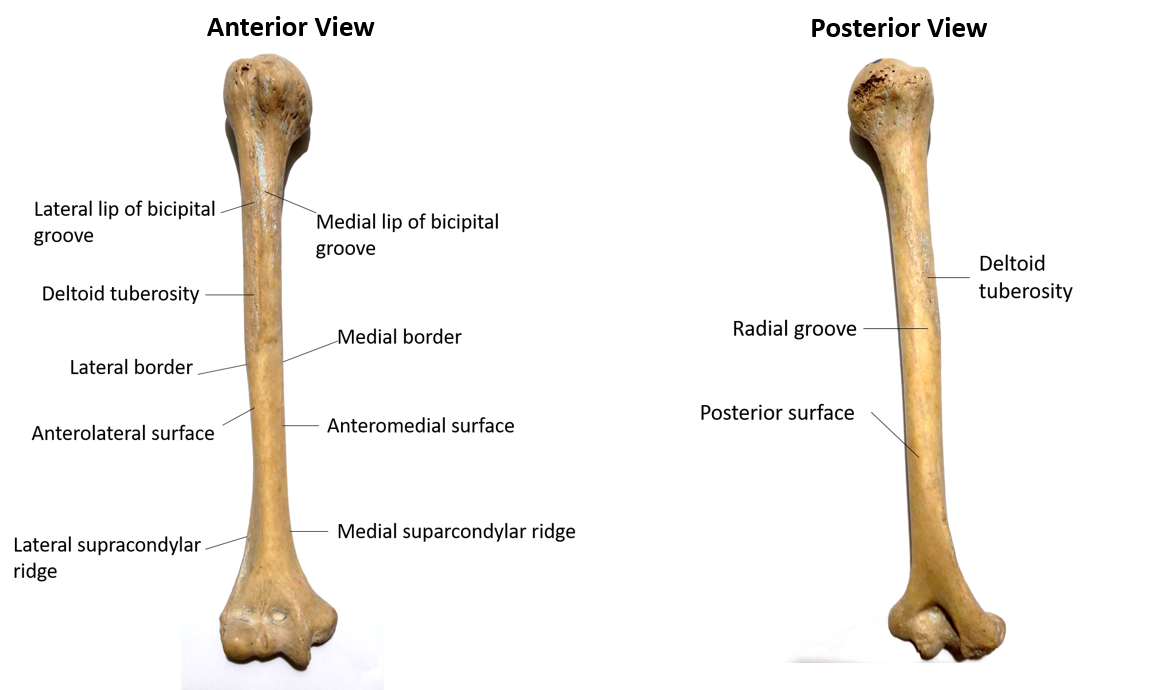
How will you determine the side of humerus?
The humerus should be kept in such a way that:
- Upper end having rounded head is placed upwards.
- Head should be directed medially.
- Intertubercular sulcus should face anteriorly.
- Olecranon fossa faces posteriorly.
How will you hold humerus in anatomical position?
Hold the bone vertically in such a way that the head is directed upwards, medially and a little backwards.
Name the muscles attached to the upper end of humerus.
- Subscapularis – on lesser tubercle
- Supraspinatus, infraspinatus, teres minor – on greater tubercle from above downwards.
- Pectoralis major – on lateral lip of bicipital groove.
- Latissimus dorsi – on floor of bicipital groove.
- Teres major – on medial lip of bicipital groove.
*Tendon of long head of biceps passes through the bicipital groove.

Name the muscles attached to the shaft of humerus.
- Anterior aspect
- Corachobrachialis – on middle of medial border.
- Deltoid – on deltoid tuberosity on lateral aspect.
- Brachialis – on anteromedial and anterolateral surface of lower half of humerus.
- Pronator teres – on lower part of medial supracondylar ridge.
- Brachioradialis – on upper 2/3rd of lateral supracondylar ridge.
- Extensor carpi radialis longus – on lower 1/3rd of lateral supracondylar ridge.
- Posterior aspect
- Lateral head of triceps – on posterior surface above the radial groove.
- Medial head of triceps – on posterior surface below the radial groove.
Muscles attached at lower end
- Superficial flexors of forearm – on anterior surface of medial epicondyle.
- Superficial extensors of forearm- on laeral epicondyle.
- Anconeus – on posterior surface of lateral epicondyle.
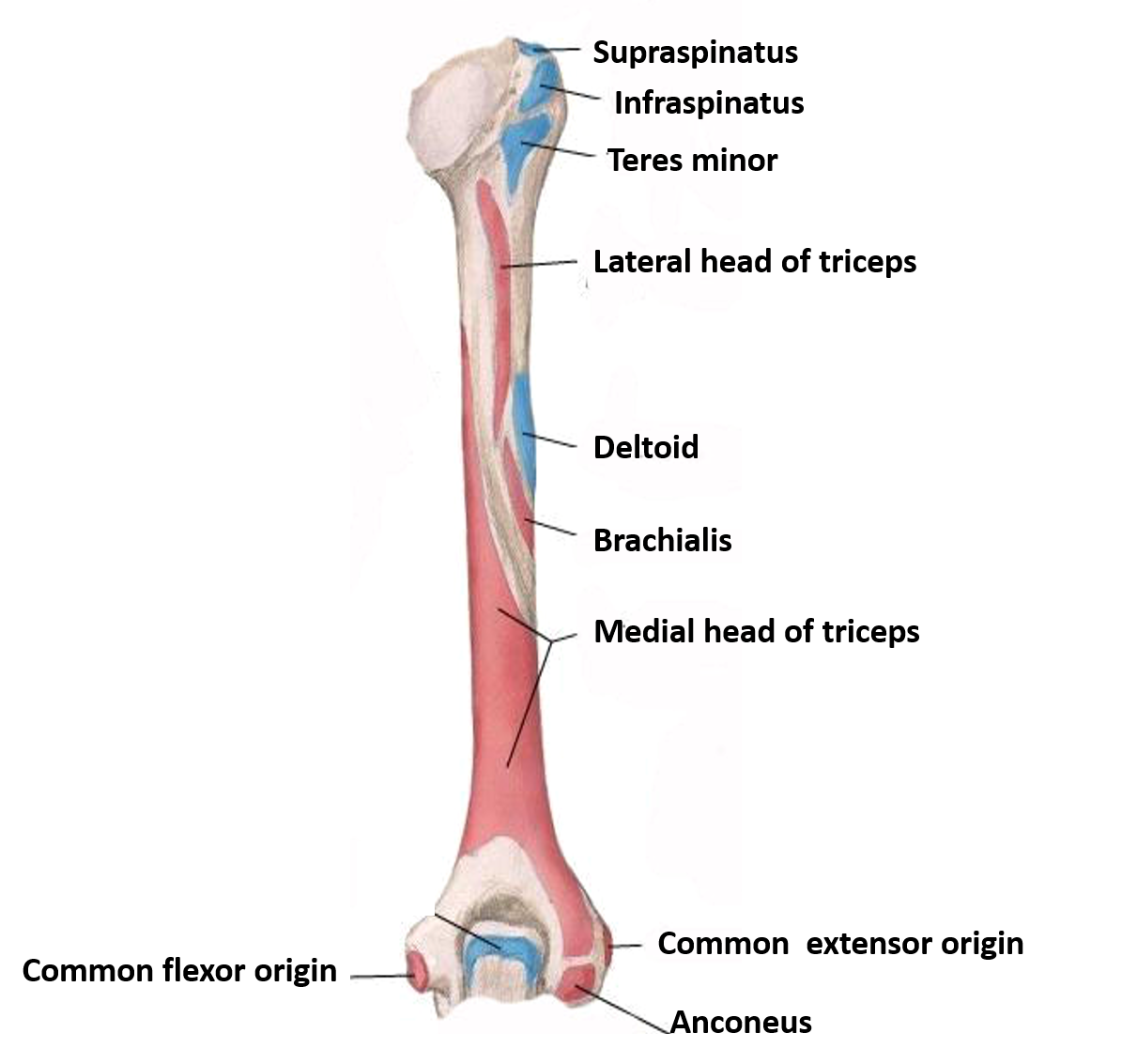
Name the ligaments attached to the humerus.
Upper end : coracohumeral ligament and transverse humeral ligament.
Lower end : Radial and ulnar collateral ligaments attached to lateral and medial epicondyle respectively.
Mark the capsular attachment of shoulder and elbow joint on humerus.
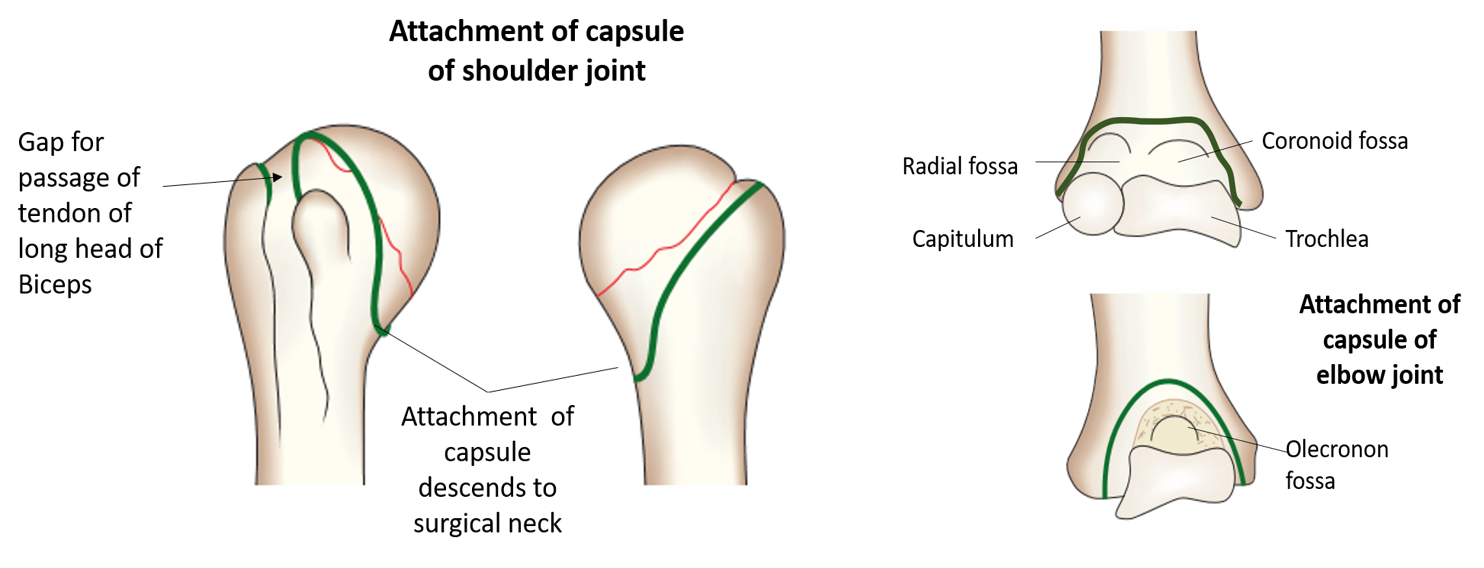
Name the nerve and vessels closely related to humerus which may get injured during fracture of different parts of humerus.
Following nerves and vessels are closely related to humerus.
- Axillary nerve and posterior circumflex humeral vessels – to surgical neck of humerus.
- Radial nerve and profunda brachii vessels -to radial/spiral groove.
- Ulnar nerve – posterior to medial epicondyle.

Which is the growing end of humerus? How does humerus ossify?
Upper end of humerus is the growing end ( The direction of nutrient foramen is downwards). Primary centre of ossification appears in the shaft during 8th week of intrauterine life.The upper end ossifies by 3 and lower end by 4 secondary centres of ossification.

Information was really helpful loved it … And plz gives more info on entrance point of view also
It’s super knowledge…it’s very easy to learn and received from our brain… thank you so much
Very very useful
Thanks.
😊🙏🏻👍